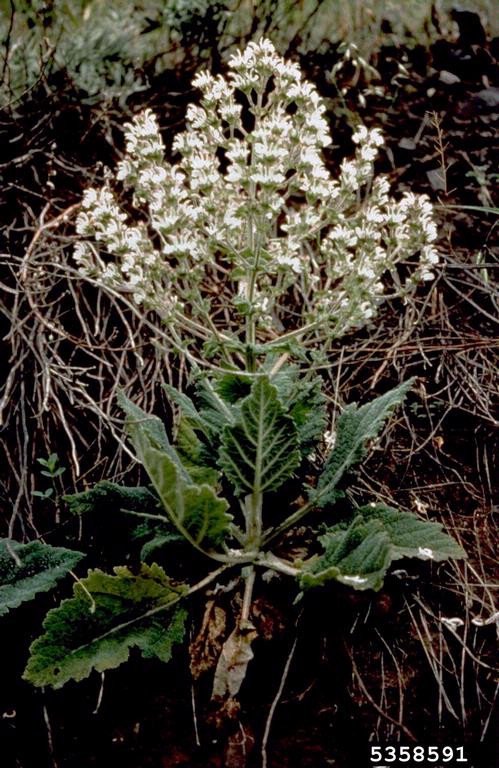Mediterranean Sage

Mediterranean Sage
(Salvia aethiopis)
Priority: - Prevent / EDRR
Tags: Terrestrial
Identification and Reproduction
Identification:
- Mediterranean sage, also known as African sage, is a perennial plant that can reach 90 cm tall.
- Stems are square and covered in fine wooly hairs.
- Rosette leaves are larger than stem leaves and are greyish-green. Rosettes can reach a diameter of 1.2 m wide.


- Flowering stems are very branched and do not develop until June-August.
- Leaves will decrease in size moving up the stem. They are aromatic (sage-like) when crushed.
- Flowers are yellow to white and bilabiate.
Reproduction:
- Reproduces solely by seed.
- A single plant can produce up to 100,000 seeds in a growing season.
- Stalks will break up and blow as tumbleweeds, further dispersing seeds.
Habitat & Ecology
- Commonly overtaking disturbed sites, fields, rangelands and more recently agronomic crop sites.
- Has yet to be observed in Canada.
Impacts
Social:
- This plant is unpalatable to livestock and reduces foraging opportunities for livestock.
- Contaminates alfalfa seed crops.
Ecological:
- Reduces native plant biodiversity.
Management
Prevention is a high priority for this species.
- Maintain good ground cover to slow the spread and prevent invasive establishment.
- Learn to identify Mediterranean sage.
- Report this plant if you think you have seen it.
Resources
For more information check out the Invasive Species Extension on Salvia aethiopis, Mediterranean Sage.
Header photo (Javier Pelayo).


